| Srl | Item |
| 1 |
ID:
044144
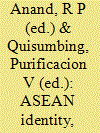

|
|
|
|
|
| Publication |
Quezon city (Phillpines)University of the Philippines Law center, UP Law Center and East-West Center Culture Learning Institute, 1981.
|
| Description |
xxx, 411p.hbk
|
|
|
|
|
|
|
|
|
|
|
|
Copies: C:1/I:0,R:0,Q:0
Circulation
| Accession# | Call# | Current Location | Status | Policy | Location |
| 022222 | 959/ANA 022222 | Main | On Shelf | General | |
|
|
|
|
| 2 |
ID:
048669
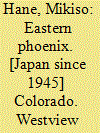

|
|
|
|
|
| Publication |
Colorado, Westview Press, 1996.
|
| Description |
x, 260p.hbk
|
| Standard Number |
0813318122
|
|
|
|
|
|
|
|
|
|
|
|
Copies: C:1/I:0,R:0,Q:0
Circulation
| Accession# | Call# | Current Location | Status | Policy | Location |
| 039258 | 952.04/HAN 039258 | Main | On Shelf | General | |
|
|
|
|
| 3 |
ID:
025381
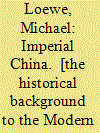

|
|
|
|
|
| Publication |
London, George Allen and unwin Ltd, 1966.
|
| Description |
325p.Hbk
|
|
|
|
|
|
|
|
|
|
|
|
Copies: C:1/I:0,R:0,Q:0
Circulation
| Accession# | Call# | Current Location | Status | Policy | Location |
| 001066 | 931/LOE 001066 | Main | On Shelf | General | |
|
|
|
|
| 4 |
ID:
127335
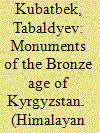

|
|
|
| 5 |
ID:
189972
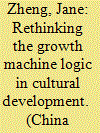

|
|
|
|
|
| Summary/Abstract |
Using urban sculpture planning in Shanghai as a case study, this article aims to understand the process of planning cultural projects in China and to evaluate the applicability of the growth machine model to the social dynamics underlying cultural development in Chinese cities. Based on interviews with sculpture planning officers in 10 districts and the municipality, as well as 56 companies that have been involved in sculpture projects in Shanghai, this article argues that the growth machine model is of limited applicability to urban sculpture planning in Shanghai. Instead, a public-sector-centred tripartite model is more applicable for the following reasons. First, most cooperative relationships in key cultural development projects engage state-patronized public corporations instead of the private sector. Here the government plays a dominant role. Second, public–private partnership is rare and loosely formed. The broadly defined concept of shared cultural capital that includes personal artistic tastes, altruistic motivations, and brand building concerns engenders public–private cooperation. Third, the local state adopts a laissez-faire approach to most of the private-sector-invested cultural projects that the government considers to be less crucial to its vision for Shanghai’s art landscape.
|
|
|
|
|
|
|
|
|
|
|
|
|
|
|
|
| 6 |
ID:
137288
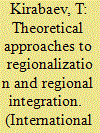

|
|
|
|
|
| Summary/Abstract |
GLOBAL TRANSFORMATIONS of the last few decades have affected, to a great extent, international space: globalization which added mobility to global population and vagueness to national borders; information technologies and transport infrastructure which are developing by leaps and bounds, etc. are changing the nature of human contacts and the relationships between transnational companies, organizations and states.
|
|
|
|
|
|
|
|
|
|
|
|
|
|
|
|
| 7 |
ID:
129035
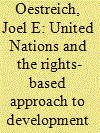

|
|
|
|
|
| Publication |
2014.
|
| Summary/Abstract |
This article examines how various United Nations agencies are implementing a rights-based approach to development in India. It argues that, while most studies of RBA focus on the promotion of economic, social, and cultural rights through this approach, civil and political rights are also integral to UN efforts. This is important because it suggests a new, more cooperative mode of promoting human rights as an alternative to traditional New York- and Genevabased mechanisms. The article explains how rights are being promoted. It also lays out some strategies that UN bodies use to circumvent host state resistance to outside interference on human rights. Finally, it suggests a course for future rights promotion through these mechanisms.
|
|
|
|
|
|
|
|
|
|
|
|
|
|
|
|